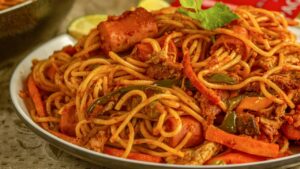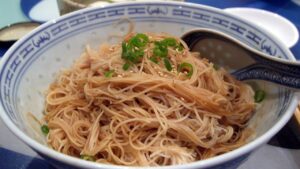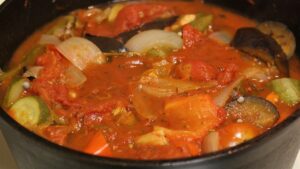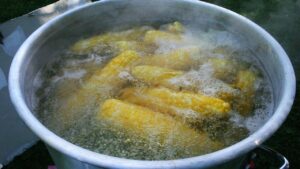Thanks to the growing popularity of Chinese cuisine, Indians are quite familiar with soy sauce.
Though many Chinese dishes have been Indianized, soy sauce is an important ingredient to bring the kind of desired taste, color, and flavor to authentic Chinese or Indo-Chinese delicacies.
Whether you are cooking restaurant-grade macaroni, street-like noodles, or serving momos, soy sauce brings the right flavor to the dish.
What is Soy Sauce?
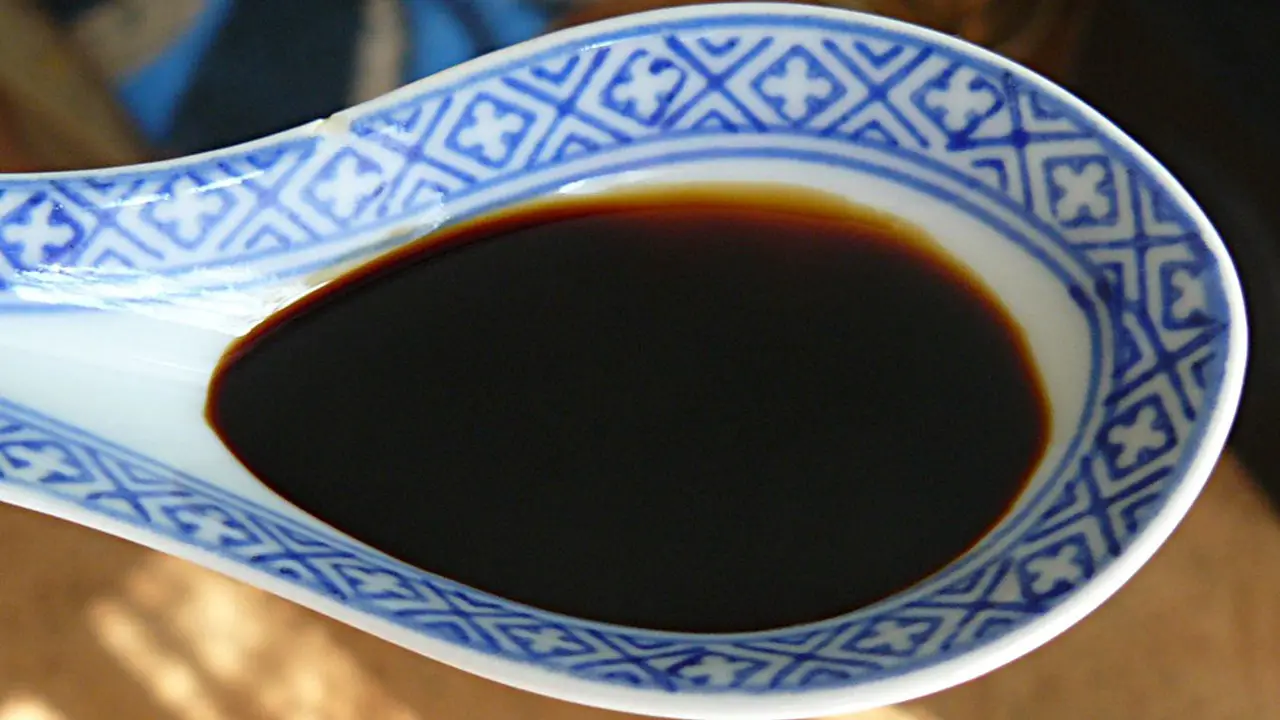
Soy sauce is a dark, salty liquid condiment made from soybeans, wheat, salt, and water. It originated in China over 2,500 years ago and is now used in many different cuisines around the world.
Uses of Soy Sauce in Indian Cuisines
Soy sauce is integral to the vegetable Manchurian recipe. This Indo-Chinese vegetable dish has become extremely popular these days,
In India, you can relish it almost everywhere, from local restaurants and roadside eateries to special weekend dinners and wedding menus.
Deep-fried vegetable balls are cooked in thick gravy flavored with soy sauce, ginger, and garlic. The Indian variant of veg Manchurian does not use any Ajinomoto.
There is a variety of soya sauces like light and dark soya. According to the taste, these two are distinct and different.
To be honest the color of the light soya is not light but the taste is typically not so dark. But at the same time, it is considered the best one to cook the other meals.
Dark Soya, on the other hand, is dark in color and at the same time, it adds a pungent smell to the food. You can check out the best recipes that are being made with the help of dark soya.
Just remember that this sauce is highly bitter and it is used for doing some excellent Chinese cooking.
This soya sauce can be used for sautéing, marinating, stirring pan-frying food, oriental dishes, and other street foods made with soy sauce.
Chilli paneer is another Indo-Chinese starter. Deep-fried and batter-coated paneer cubes are added to thick, creamy, and flavorsome curry.
The sumptuous treat brings to your palate a distinct flavor of spring onion, green chilies, and oriental sauces.
Chilli chicken is another favorite of the Indians. It is prepared with the same ingredients that go into the making of chili paneer. Chilli chicken is spicy, thick gravy that perfectly goes well with fried rice.
Chow Mein never looks or tastes so good without soy sauce. Whether veg or non-veg chow mein, it is always tossed with some common sauces including, tomato sauce, chili sauce, and soy sauce.
How Do You Make Soy Sauce?
Soy sauce is a traditional condiment that originated in China and is widely used in Asian cuisine. Here is a general overview of the process for making soy sauce:
Steaming: The first step is to steam soybeans to soften them and make them easier to process.
Koji cultivation: The steamed soybeans are then mixed with roasted wheat and a mold culture called koji. The mixture is left to ferment for several days until the koji culture has fully developed.
Brine fermentation: The koji mixture is then mixed with salt and water to make a brine. The mixture is then left to ferment for several months in large vats or barrels.
During the fermentation process, the enzymes in the koji culture break down the proteins and carbohydrates in the soybeans and wheat, producing amino acids and other flavor compounds.
Pressing and aging: After the fermentation process is complete, the mixture is pressed to extract the liquid. The liquid is then aged for several months to further develop the flavor.
Filtration and pasteurization: Finally, the soy sauce is filtered to remove any impurities and then pasteurized to ensure it is safe to consume.
The specific ratios of soybeans, wheat, koji, salt, and water used in the production of soy sauce can vary depending on the region and the desired flavor profile.
The process can take several months to complete, and the resulting soy sauce can have a range of flavors and colors, from light to dark.
What Can You Cook with Soy Sauce?
You can cook various types of Chinese, Tibetan, Thai, and other regular street food which are modified by the Indian version.
Here are some examples Pad Thai, Cromlet, Spicy Tofu, Black Sesame Noodle Bowl, Rib Eye Stick, Vegetable salad,
Any type of noodles, Mushroom XO sauce, Manchurian, Chili Chicken, Chili Prawn, Turkey roast, any type of Chinese food recipes, schezwan Rice, schezwan chicken, baked bread rolls, chili paneer, momos, etc.
To be honest there are so many types of foods that are simply made with soy sauce.
Why is Soy Sauce So Delicious?
Soy sauce has a rich and complex flavor that is both savory and salty, with notes of umami, sweetness, and bitterness. There are several reasons why soy sauce is so delicious:
Umami: Soy sauce is rich in the fifth taste, umami, which is often described as a savory, meaty flavor. Umami is caused by the presence of glutamates, which are naturally occurring amino acids found in soybeans and other ingredients used to make soy sauce.
Fermentation: The fermentation process used to make soy sauce creates a range of complex flavor compounds, including amino acids, organic acids, and esters. These compounds give soy sauce its distinct flavor profile and depth of flavor.
Saltiness: Soy sauce is also salty, which can enhance the flavor of other ingredients in a dish and help balance out other flavors.
Versatility: Soy sauce is a versatile condiment that can be used in a wide range of dishes, from stir-fries to marinades to dipping sauces. Its ability to complement a variety of flavors and cuisines makes it a popular and delicious ingredient.
What Foods Go Well with Soy Sauce?
Soy sauce is a versatile condiment that can be used in a wide range of dishes and cuisines. Here are some foods that go well with soy sauce:
Rice dishes: Soy sauce is often used to flavor rice dishes, such as fried rice or rice bowls.
Stir-fries: Soy sauce is a staple ingredient in many stir-fry dishes, especially those with vegetables and protein.
Sushi and sashimi: Soy sauce is commonly used as a dipping sauce for sushi and sashimi.
Noodles: Soy sauce can be used to flavor a variety of noodle dishes, such as lo mein, udon, or soba noodles.
Grilled meats: Soy sauce can be used as a marinade or a finishing sauce for grilled meats, such as beef, chicken, or pork.
Vegetables: Soy sauce can be used to flavor steamed or stir-fried vegetables, such as broccoli, bok choy, or green beans.
Soups: Soy sauce can be used to add depth of flavor to soups, such as miso soup or hot and sour soup.
Salad dressings: Soy sauce can be used as an ingredient in salad dressings, especially those with an Asian or fusion flavor profile.
Overall, soy sauce can be used to add savory, umami-rich flavor to a wide range of dishes, making it a popular and versatile condiment.
Conclusion
Soy sauce has become a familiar ingredient in Indian cuisine, especially in Indo-Chinese dishes.
Soy sauce is made from soybeans, wheat, salt, and water, and is integral to dishes such as vegetable Manchurian, chilli paneer, and chow mein.
Soy sauce has a rich, complex flavor due to the presence of umami, fermentation, and saltiness.
Soy sauce can be used in a wide variety of dishes and cuisines, making it a versatile and essential ingredient in many kitchens.

